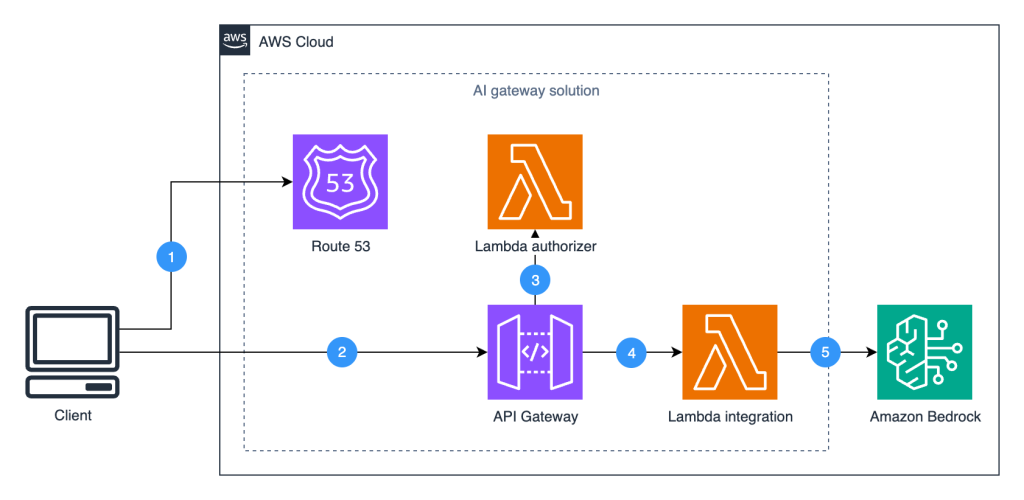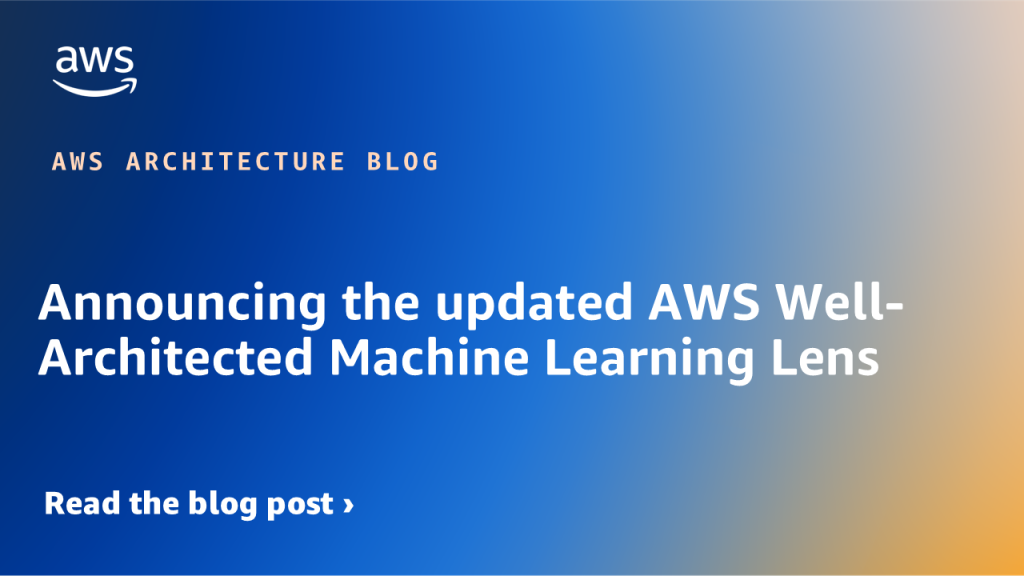AWS Architecture Blog
Category: Amazon Machine Learning
Building an AI gateway to Amazon Bedrock with Amazon API Gateway
In this post, we’ll explore a reference architecture that helps enterprises govern their Amazon Bedrock implementations using Amazon API Gateway. This pattern enables key capabilities like authorization controls, usage quotas, and real-time response streaming. We’ll examine the architecture, provide deployment steps, and discuss potential enhancements to help you implement AI governance at scale.
Architecting for AI excellence: AWS launches three Well-Architected Lenses at re:Invent 2025
At re:Invent 2025, we introduce one new lens and two significant updates to the AWS Well-Architected Lenses specifically focused on AI workloads: the Responsible AI Lens, the Machine Learning (ML) Lens, and the Generative AI Lens. Together, these lenses provide comprehensive guidance for organizations at different stages of their AI journey, whether you’re just starting to experiment with machine learning or already deploying complex AI applications at scale.
Announcing the updated AWS Well-Architected Machine Learning Lens
We are excited to announce the updated AWS Well-Architected Machine Learning Lens, now enhanced with the latest capabilities and best practices for building machine learning (ML) workloads on AWS.
Build resilient generative AI agents
Generative AI agents in production environments demand resilience strategies that go beyond traditional software patterns. AI agents make autonomous decisions, consume substantial computational resources, and interact with external systems in unpredictable ways. These characteristics create failure modes that conventional resilience approaches might not address. This post presents a framework for AI agent resilience risk analysis […]
Simplifying sustainability reporting using AWS and generative AI in banking
In this post, you learn how you can use generative AI services on Amazon Web Services (AWS) to automate your sustainability reporting requirements, reduce manual effort, and improve accuracy. You do this by implementing an automated solution for extracting, processing, and validating data from corporate reports.
Amazon Bedrock baseline architecture in an AWS landing zone
In this post, we explore the Amazon Bedrock baseline architecture and how you can secure and control network access to your various Amazon Bedrock capabilities within AWS network services and tools. We discuss key design considerations, such as using Amazon VPC Lattice auth policies, Amazon Virtual Private Cloud (Amazon VPC) endpoints, and AWS Identity and Access Management (IAM) to restrict and monitor access to your Amazon Bedrock capabilities.
Analyze media content using AWS AI services
Organizations managing large audio and video archives face significant challenges in extracting value from their media content. Consider a radio network with thousands of broadcast hours across multiple stations and the challenges they face to efficiently verify ad placements, identify interview segments, and analyze programming patterns. In this post, we demonstrate how you can automatically transform unstructured media files into searchable, analyzable content.
Optimizing fleet operations using Amazon SageMaker AI and Amazon Bedrock
In this post, we’ll explore how to maximize the value of dashcam footage through best practices for implementing and managing Computer Vision systems in commercial fleet operations. We’ll demonstrate how to build and deploy edge-based machine learning models that provide real-time alerts for distracted driving behaviors, while effectively collecting, processing, and analyzing footage to train these AI models.
How Smartsheet boosts developer productivity with Amazon Bedrock and Roo Code
This post explores how Smartsheet successfully deployed Roo Code with Amazon Bedrock and Anthropic’s Claude, achieving significant improvements in developer efficiency while optimizing costs through innovative caching strategies.
Revolutionizing agricultural knowledge management using a multi-modal LLM: A reference architecture
In this blog post, we introduce a reference architecture that offers an intelligent document digitization solution that converts handwritten notes, scanned documents, and images into editable, searchable, and accessible formats. Powered by Anthropic’s Claude 3 on Amazon Bedrock, the solution uses the sophisticated vision capabilities of LLMs to process a wide range of visual formats, preserving the original formatting while extracting text, tables, and images.









